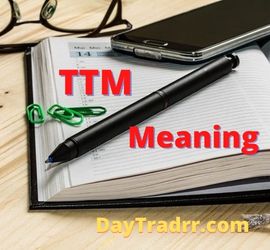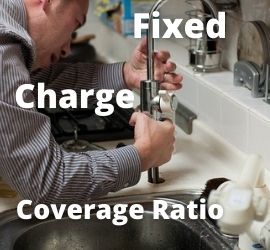What Is Backward Integration?
 Backward integration is a form of vertical integration. It occurs when a company expands its production role to accomplish tasks that were previously completed by companies up the supply chain. For example, a company might buy its supplier of inventory or raw materials. Merging with the former supplier provides a number of benefits and greater control of the products or services needed for its internal production.
Backward integration is a form of vertical integration. It occurs when a company expands its production role to accomplish tasks that were previously completed by companies up the supply chain. For example, a company might buy its supplier of inventory or raw materials. Merging with the former supplier provides a number of benefits and greater control of the products or services needed for its internal production.
Typically, companies often complete backward integration by acquiring or merging with these former suppliers. However, they can also establish their own subsidiary to accomplish the task. Complete vertical integration occurs when a company owns every stage of the production process. They control raw materials through production to finished goods and services. However, backward integration can be capital intensive. It often requires large sums of money to purchase all or part of the supply chain.
Businesses pursue backward integration for a number of advantages. The expectation is that it will result in cost savings, increased revenues, and improved efficiency in the production process. Companies also use backward integration as a way of gaining a competitive advantage. Controlling the supply chain creates significant barriers to entry for new potential competitors.
Backward Integration – A Closer Look
Companies often use integration as a means control a greater portion of the company’s supply chain. A supply chain is the group of organizations, resources, activities, and technologies involved in the manufacturing and sale of a product. The supply chain starts with the delivery of raw materials from a supplier to a manufacturer. It ends with the sale and service of a final product to an end-consumer.
Backward integration uses vertical integration to boost efficiency. It is a competitive strategy where a company encompasses multiple segments of the supply chain. The goal is to control a large portion, or all, of their production process. Vertical integration might lead a company to integrate with its distributors that ship their product. Or, to own and control retail locations that sell their product. In the case of backward integration, the goal is usually to control suppliers of inventory and raw materials by integrating backward in its immediate supply chain.
For example, Netflix Inc. started out as a DVD rental company supplying TV and film content. However, they used backward integration to expand their business model by creating original content.
Backward Integration vs. Forward Integration
Backward integration involves merging with the supply chain that occurs prior to the company’s manufacturing process. Forward integration involves merging with the process that occurs after the company’s manufacturing process. In forward integration, the company is usually interested in controlling access to its customers. It usually involves acquiring distribution or retail presence to sell the final products to the end consumer.
For example, a clothing manufacturer typically sells its clothes through retail department stores. However, the manufacturer could take steps to open its own retail outlets and bypass the department stores. Backward integration for the same clothing manufacturer might involve buying a textile company. Or, maybe a firm that produces proprietary synthetic materials for their clothing line.
Advantages of Backward Integration
Backward integration is attractive when the expected result is improved efficiency and cost savings. Goals might be to cut transportation costs, improve profit margins, and make the firm more competitive. Greater control can be exercised from production all the way through to the distribution process. In turn, this yields greater control over the entire value chain. It can increase efficiency and provide direct access to needed materials. In addition, it can keep competitors at bay and provide access to certain markets and resources, including technology or patents.
Backward Integration Pros
- Better control – A company exercises greater control over the supply chain process when it acquires raw material suppliers. It can then influence all steps in production of raw materials to the production of the end product. Also, the company will gain control over the quality of raw materials that are used in the production of the end product. Additionally, the manufacturer will achieve greater control over the quantity and delivery of the raw materials to its warehouse.
- Greater profit – A typical supply chain can include unwanted middlemen. In effect, each phase in the supply chain includes a mark-up to allow the middleman to earn a profit. This will drive up the price and make the finished product more expensive for the consumer. Acquiring raw material suppliers can help elimminate middlemen. The result can significntly reduce the cost of purchasing the raw materials. Controlling the entire supply chain helps control waste, transport costs, and a host of other costs and ineffeciencies.
- Competitive advantage – Backward integration is a way to gain a competitive advantage over competitors. In the technology industry, companies integrate backward as a way of gaining access to patents, trademarks, and proprietary technology owned by other companies in the industry. Acquiring these companies prevents competitors from using the same resources. As a result, other firms are forced to look for alternatives in the market. Acquiring suppliers also create barriers to entry. New competitors will face difficulties getting suppliers for the raw materials required in the production process. (Source: corporatefinanceinstitute.com)
Disadvantages of Backward Integration
Backward integration can be capital intensive. It often requires large sums of money to purchase part of the supply chain. If a company needs to purchase a supplier or production facility, it may need to take on large amounts of debt. Although the company might realize cost savings, the cost of the additional debt might greatly reduce the cost savings. Also, the added debt on the balance sheet could impact additional credit approval in the future.
In some cases, it can be more efficient and cost-effective for companies to rely on independent distributors and suppliers. Backward integration is undesirable if it does not result in greater economies of scale and lower costs as the number of units produced increases. Companies that engage in backward integration sometimes become too large and difficult to manage. Another danger is for companies to stray from their core strengths and key profit centers.
Backward Integration Cons
- Inefficiencies – Backward integration can sometimes backfire or result in unintended consequences. Acquiring a supplier can limit competition. But it can result in a lack of innovation. The company will be less motivated to spend money on research and development. As a result, the quality of the end product may decline. Additionally, the costs of managing returns and customer complaints will increase.
- Substantial investment – Another disadvantage of backward integration is the substantial investment that will be needed to finance the acquisition. Companies may be forced to utilize cash reserves and take on more debt to finance the acquisition. A sudden change in market conditions can result in the risk of default or even liquidation. One way or another, there will be an extra burden on the Company’s balance sheet. This may be in the form of debt or reduction or cash and cash equivalents.
- Core competencies. The Company may have to adopt new competencies over the old ones. There may be a clash between the old and new requirements causing inefficiency within the Company. Companies can lose track of what they were good at and what brought them success in the firts place.
- High bureaucracy. Acquiring the supplier will mean acquiring and integrating the workforce of the supplier as well. This will increase the overall size of the Company. It can cause new employee issues for the organization. A once lean and mean production company may be burdened by the added management and a bureaucratic culture.
A Real-World Example
Many large companies and conglomerates conduct backward integration, including Amazon.com Inc. Amazon began as an online book retailer in 1995, procuring books from publishers. In 2009, it opened its own dedicated publishing division, acquiring the rights to both older and new titles. It now has several imprints.
Although it still sells books produced by others, its own publishing efforts have boosted profits by attracting consumers to its own products, helped control distribution on its Kindle platform, and given it leverage over other publishing houses. In short, Amazon used backward integration to expand its business and become both a book retailer and a book publisher. (Source: investopedia.com)
Final Words
Backward integration refers to the company’s strategy of vertical integration through its supply-side. The company either merges with the suppliers or acquires the supplier’s business. A third option is for the company to set up its own internal supply unit. However, companies need to perform due diligence before integrating backward. Many factors should be considered. Equipment, processes, workforce, patents, etc. of the supplier must be reviewed. Will the investment cost and finance cost be lower over the long-term? Ultimately, it can boil down to one key question: Will the acquisition help to have a better and more efficient supply chain?
Up Next: What Is the Consumption Function?
 The consumption function is an economic formula that represents the relationship between total consumption and gross national income.
The consumption function is an economic formula that represents the relationship between total consumption and gross national income.
The consumption function, or Keynesian consumption function, is an economic formula. It represents the functional relationship between total consumption and gross national income. It was introduced by British economist John Maynard Keynes. He argued the function could be used to track and predict total aggregate consumption expenditures. The consumption function is the whole schedule. It describes the amounts of consumption at various levels of income.
Keynes believes that consumption is a function of income. Demand for a good depends upon its price. Similarly, the consumption of a community depends upon the level of income. The consumption function relates the amount of consumption to the level of income. When the income of a community rises, consumption also rises. How much consumption rises in response to a given increase in income depends upon the marginal propensity to consume.




